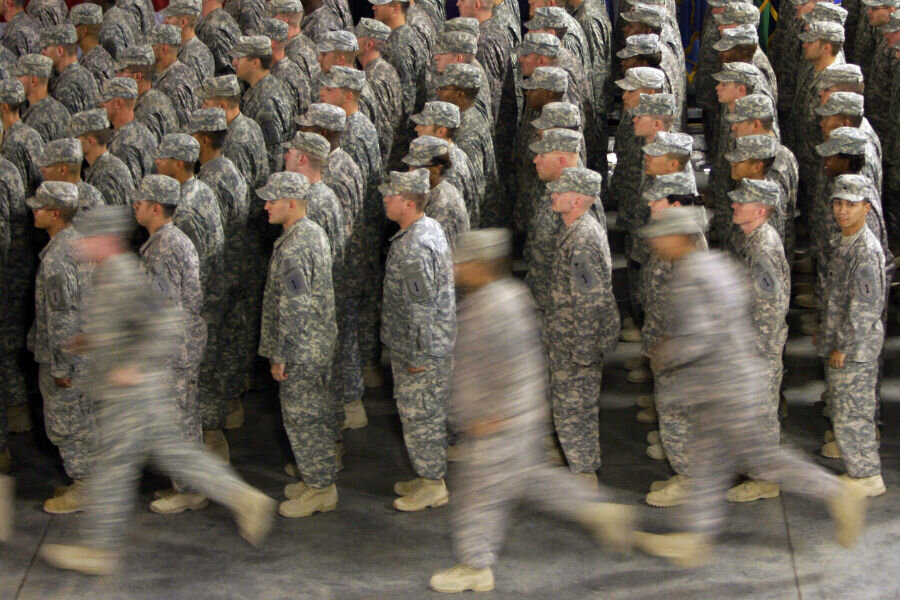Why is the US Army cutting troops?
Loading...
The United States Army announced job cuts to its frontline forces, with troop numbers contracting from 490,000 to 450,000 by the end of fiscal year 2018, Army officials said during a press conference at the Pentagon on Thursday.
This is the second round of cuts, which began in 2013, to bring the Army from 570,000 at its peak in the Afghan and Iraq wars, to its current state of 490,000 soldiers.
"These are incredibly difficult choices," said Brig. Gen. Randy George, director of force management for the Army. "The Army followed a long and deliberate process that included utilization of a [Government Accountability Office]-endorsed military value analysis process, and an inclusive total Army analysis, in order to determine the best construct for the Army, based on the threats we face and the current fiscal environment we must operate in."
The reduction was first announced more than a year ago, as the Pentagon seeks to absorb $1 trillion in budget reductions and Congress faces sequestration, according to Reuters.
George said that cuts below 450,000 soldiers "would be significant risk" for the Army, in terms of meeting current combatant requirements and also "being ready for the unknowns."
"The resulting force would be incapable of simultaneously meeting current deployment requirements and responding to the overseas contingency requirements of the combatant commanders," George said.
If sequestration continues in October, the Army anticipates cutting another 30,000 – shrinking to 420,000 soldiers. George said such an action would begin after this round had completed, likely sometime in 2019.
Talk of troop reduction spurred anxiety in military communities nationwide.
In Alaska, town hall meetings were conducted in Anchorage and Fairbanks in February to air community concerns.
The only airborne brigade combat team in the Pacific theater is near Anchorage; it is the newest such team in the United States, created in the wake of the Sept. 11, 2001, terrorist attacks. The unit’s soldiers have served in Iraq and Afghanistan, with 21 troops killed in action, according to Alaska Dispatch News.
Downsizing Army forces in Alaska "makes no strategic sense," said Sen. Dan Sullivan (R) of Alaska, a member of the Senate Armed Services committee. Increased activity in the Asia Pacific region and Russian aggression require military positioning in Alaska, according to the senator.
"One person who's going to be very pleased with this is Vladimir Putin," Sullivan said.
Sen. Tim Kaine (D) of Virginia released a statement following the announcement, expressing concern that the decision to make cuts are the effects of crisis budgeting and constraints made “prior to the emergence of ISIL, Russian aggression in Ukraine, rising tensions in the South China Sea and the Ebola crisis.”
Alaska will see troops cut over the next few years of 2,631 soldiers from Joint Base Elmendorf-Richardson, Alaska. Other Army installations that will be impacted include 3,402 soldiers on Fort Benning, Georgia; 3,350 soldiers on Fort Hood, Texas; 1,251 soldiers on Joint Base Lewis-McChord, Washington; 1,214 soldiers on Schofield Barracks, Hawaii; and 1,219 soldiers on Fort Bliss, Texas.
George said that the Army will try to draw down to "minimize the turbulence we have with soldiers and their families."







